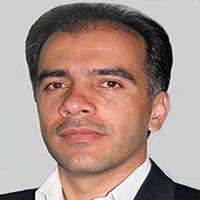Analysis of the spatial distribution of population and urban services with emphasis on Social Justice and urban inequality (Case Study: Urban Neighborhoods in Firoozabad, Fars)
Social Justice is defined as unfair spatial distribution of Facilities Since lack of equitable distribution lead to Social crises and complex spatial problems while equitable distribution also lead to Balanced development of urban areas. So, optimal distribution of services and facilities, Based on social justice, has a very important role for urban planning process. The aim of this research is survey and analyzes ways of spatial distribution of services and facilities in urban areas in Firoozabad to establish of precise or balanced distribution in urban areas.
Accordingly, methodology is descriptive-analytical and population, based on the physical division and urban development, is 12 urban neighborhoods. 17 indicators are used for services distribution in urban neighborhoods. Entropy Coefficient is used for analysis of data and standardized score index and coefficient of variation (C.V) are also used for distribution of urban services in urban neighborhood. Spearman correlation coefficients And regression coefficient are used for determination relation between variable. Finally, Strategic planning method SWOT is used for determine balanced development of population.
According to General Census of Population and Housing 2011, Firoozabad has a population 64,969 that has a growth of 1/33 than 2001 General Census. Neighborhood 3 from district 1 has highest population density and Neighborhood 1 of district 1 has lowest density between all Neighborhoods in firoozabad. Findings based on results of entropy coefficient are shown equality and relative balance for population distribution among 12 Neighborhood in Firoozabad. Assessment rate of regression coefficient with 0/372 and area of Neighborhoods Indicating lack of causal relationship between two variables. In fact, there are not a proper relation between population and areas of neighborhood (population are not accordance with areas). Based on Standardized score method, the greatest inequality in spatial distribution belong to service Indicators include higher education, tourism and hospitality and sports centers and smallest of those belong to Transportation and warehousing. On this same basis, Neighborhood 5 from district 2 And Neighborhood 3 of district 2, based on optimal distribution for urban facilities, are most balanced and the most uneven neighborhoods respectively. Linear regression coefficients are shown that services distribution among Neighborhoods cannot be explained.
So, enhancement of indicators of urban facilities and balanced distribution of them should be the priority. In this regard, control of the horizontal extension and increase of density especially in Neighborhoods 5 and 6 from district 2, Creating and reinforcement welfare and Services infrastructure in areas with low facilities, provide urban facilities for Neighborhoods 1, 4 and 6 from district 1 and Neighborhoods 2 and 3 from district 2 As unstable neighborhoods are suggested.
- حق عضویت دریافتی صرف حمایت از نشریات عضو و نگهداری، تکمیل و توسعه مگیران میشود.
- پرداخت حق اشتراک و دانلود مقالات اجازه بازنشر آن در سایر رسانههای چاپی و دیجیتال را به کاربر نمیدهد.


